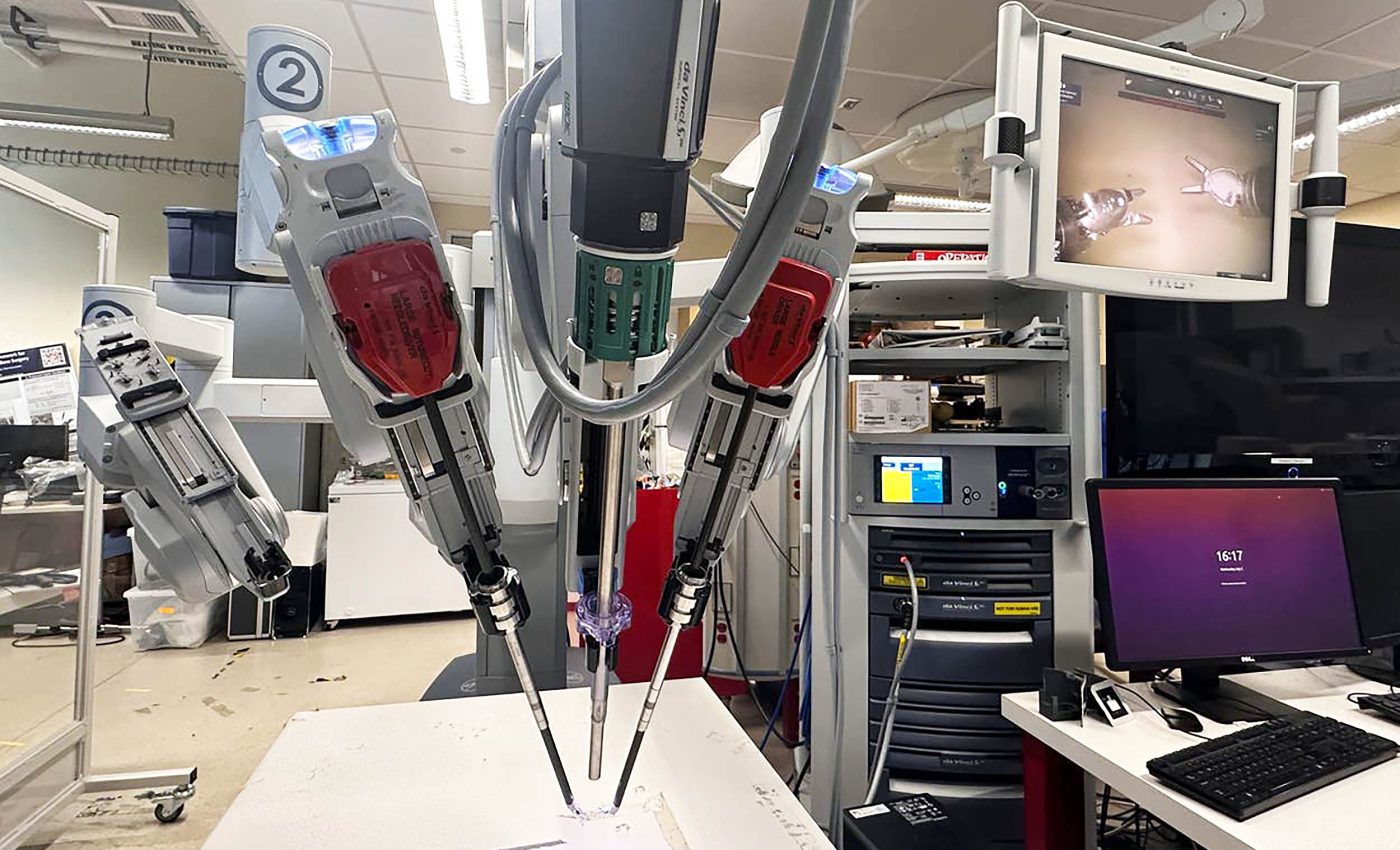
Robot performs surgery without a human controlling its hands for the first time ever
A surgical robot named SRT-H has completed the most delicate portion of a gallbladder removal on a lifelike model without a human controlling its arms.
The demonstration, reported on July 9, 2025, signals a step toward operating rooms where machines handle routine tissue work while surgeons oversee strategy.
Gallbladder removal, or cholecystectomy, ranks among the most common operations in the United States with 750,000 to 1 million cases every year.
Training a robot to navigate the tangled ducts, vessels, and sudden bleeds involved in that procedure has challenged engineers for decades.
Robot starts making surgery decisions
Lead researcher Axel Krieger of Johns Hopkins University says the new system behaves less like a rigid industrial arm and more like a junior resident who can learn on the fly.
His team previously built the Smart Tissue Autonomous Robot, known as STAR, which stitched pig intestines in 2022 but still relied on special tracking markers.
The latest platform, called SRT‑H, extends that earlier work by combining camera feeds with a language conditioned hierarchy that tells each motor exactly where to go.
Instead of following a fixed playbook, it chooses its next move after reviewing what it sees inside the patient and what the team says aloud.
During the study the robot completed 17 consecutive tasks, placing clips on tiny arteries, cutting tissue, and repositioning when dye obscured its field.
Performance matched that of an expert surgeon, though the machine took a few extra minutes to finish the sequence.
SRT‑H learns by watching and listening
SRT‑H did not learn from code but from YouTube‑style footage of faculty performing cholecystectomies on pig cadavers, each clip paired with plain language captions.
Those labels formed a cookbook of gestures that the high‑level policy invokes, while a low‑level controller refines wrist angles millisecond by millisecond.
“This advancement moves us from robots that can execute specific surgical tasks to robots that truly understand surgical procedures,” said Krieger.
The machine responded to spoken nudges such as “move the left arm a bit to the left,” adjusting grip and trajectory in real time.
“This work represents a major leap from prior efforts,” noted Ji Woong “Brian” Kim, now at Stanford University. Kim emphasized that the imitation‑learning framework can rescue the robot when it drifts into awkward positions instead of stalling.
Gallbladders help test robot surgery skills
Surgeons pick gallbladders for early autonomy trials because the organ lies in a predictable spot yet presents a mix of ducts, vessels, and slippery fat.
A misclip on the common bile duct can cause lifelong complications, so even minor improvements in precision could spare thousands of patients repeat operations.

Inside the study, SRT‑H recognized the cystic artery despite investigators tinting nearby tissue with red dye, a trick that often confuses computer vision.
That resilience matters because real human abdomens rarely match the tidy diagrams found in textbooks.
SRT‑H thinks like a surgeon
Unlike factory robots that repeat a weld, SRT‑H chooses strategies through a hierarchical policy, selecting objectives in plain English then mapping them to motor commands.
The approach resembles the prompting methods that steer large language models like GPT‑4, though here the stakes involve patient safety rather than creative text generation.
A high level planner can instruct the robot to expose Calot’s triangle, and the lower layer then manages the tiny cuts needed to make that happen.
Surgeons watched the system edit its own plan when blood pooled, demonstrating situational awareness beyond previous autonomous attempts.
“Just as surgical residents often master different parts of an operation at different rates, this work illustrates the promise of developing autonomous robotic systems in a similarly modular and progressive manner,” said Jeff Jopling, a Johns Hopkins surgeon.
The layered design also lets engineers swap in better perception modules without rewriting the entire algorithm.
Robot surgery safety tests
Even with flawless lab performance regulators will insist on exhaustive validation before the robot touches a living person.
The team plans to run trials on cadavers and live animals under conditions that mimic crowded emergency rooms.
Failure modes include camera fogging, suction delays, or electrocautery sparks, each of which could scramble visual cues.
Kim’s group is building a watchdog module that interrupts the robot and summons the surgeon if sensors detect drift or hardware faults.
Ethicists also warn that hospitals must clarify liability when an autonomous system makes a cut. Krieger counters that consistent precision might reduce malpractice overall, but admits policy needs to catch up.
Future of SRT-H and robot surgeons
Future updates aim to let SRT‑H perform an entire cholecystectomy from first incision to closing skin, as well as expand into hernia repairs and bowel resections.
Krieger hopes cloud‑based training will one day let a robot in a rural clinic learn from video uploaded hours earlier at a major center.
For now the gallbladder milestone shows that surgical autonomy is no longer science fiction but an engineering task with a clear checklist.
Patients may never see the robot’s face, yet its steady hands could soon shorten queues for safe, dependable surgery.
The study is published in Science Robotics.
—–
Like what you read? Subscribe to our newsletter for engaging articles, exclusive content, and the latest updates.
Check us out on EarthSnap, a free app brought to you by Eric Ralls and Earth.com.
—–













